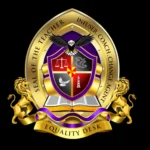Added to wishlistRemoved from wishlist 0

Information to Spiritual Variety within the US Office: Problems with Faith and Religion are rising as main challenges within the American office. Spiritual Variety at Work guides enterprise leaders and repair suppliers by way of non secular variations. Our many contributors present much-needed non secular literacy, professional recommendation on minimizing battle, and interesting coaching instruments.
Specification: Religious Diversity at Work
|
3 reviews for Religious Diversity at Work
5.0 out of 5
★★★★★
★★★★★
3
★★★★★
0
★★★★★
0
★★★★★
0
★★★★★
0
Write a review
Show all
Most Helpful
Highest Rating
Lowest Rating
Add a review Cancel reply
Related Products
Added to wishlistRemoved from wishlist 0
$9.99
Added to wishlistRemoved from wishlist 0
$19.99
Added to wishlistRemoved from wishlist 0
$19.99
Added to wishlistRemoved from wishlist 0
$40.95
Added to wishlistRemoved from wishlist 0
$32.00
Added to wishlistRemoved from wishlist 0
$9.99









George F. Simons –
In addition to her own contributions, Deborah Levine has gathered religious expertise representing various traditions in order to assemble authors for what is a most useful manual for organizations dealing with questions of religious diversity in the US American workplace. The opening pages of the book specifically offer short bios this diverse authorship.The work is not theoretical, but informative and practical, helping its readers to both recognize and manage religious diversity issues which can occur on a day-to-day basis. The “rules of engagement” are set out in the very first chapter and the second offers additional tools in the form of quick reference cards that can add to the longevity and application of the knowledge one gains in this read.The delicacy of religious beliefs, as well as the heightened sensitivity peculiar to US diversity issues, makes it impossible for employers and managers not to have at least the basic savvy contained in this book. Often religious diversity is ignored until there is a critical incident, badly handled, that is costly to the organization, not just financial terms and time-consuming litigation, but with effects on talent management and the organization’s ability to sustain an environment of goodwill.Chapters 3 through 6 offer insights to common areas that present workplace challenges in terms of managing religious diversity. People bring their religion to work with them, this often results in a desire to share one’s devotion or one’s practices and values with others in ways that are inappropriate. On the other hand, in a diverse society, religious seasons and holidays, requirements of food and dress and required religious practices may require legitimate accommodations of the workplace schedule, cafeteria diets, meeting space and other protocols. All of these provide challenges to management and colleagues that these chapters are meant to help with, given the complexity of these situations.Further chapters present the beliefs and practices of major religious traditions in significant detail as well as discuss the religiously unaffiliated, always keeping in mind that people differ not only by tradition but by their level of commitment and practice within a tradition, making the management of diversity not only complex, but requiring understanding and attention to individuals’ religious commitment and expression. In addition, one must always keep in mind that there is a legal framework within which one must operate as well. This is facilitated by an appendix of religious discrimination guidelines, as well as several appendices providing additional resources in print and online.Among the handy features of this book are the highlights found at the end of each chapter in bullet point form, making it easy to recall critical content and check that one’s reading was attentive and complete. These highlights are followed by discussion questions that can be used as a part of training or simply as a checkpoint for the retention of important issues. Lastly, following the discussion questions, and even more useful if the book is used as a preparation for or even in a training context, are the several scenarios for discussion. These take the form of live case studies, brief but to the point, that ask the reader or participant to use what has been learned in the chapter to analyze and attempt to resolve situations that could easily occur in the workplace setting.It would be excellent if a future edition of this book would contain illustrations, given the iconic turn in teaching and education and training today. Certainly most readers are familiar with a number of religious practices and symbolism that is been a part of their personal experience, but unless educated specifically in this area may miss recognizing certain of the features being discussed. Perhaps a future edition…
Elizabeth –
Excellent resource for employers and many others. Up to date and just what’s needed.
Joe Santana –
Try as they sometimes might want to, employers cannot filter out the influence of religious beliefs or the lack there of from how their employees show up in the workplace. To ignore the impact that these beliefs have in order to avoid the complexity of challenges and opportunities they bring to the workplace foolish. Imagine trying to address all the other challenges and opportunities presented by other dimensions of diversity by simply acting as if there were no gender differences, LGBTQ people, Black people, White people, etc.In this fascinating, easy to read book, author Deborah Levine successfully provides a blueprint for acknowledging these different belief systems and helping organization to create inclusive workplaces that lower friction and leverage everyone to the best of their ability. The book is full of eye-opening overviews, easy to use discussion starters and equally easy to use charts and tools. I highly recommend this book as a “must-read,” especially for business leaders today who want to forge winning teams out of individuals whose thinking has been shaped by a host of different experience not the least of which is their religious and philosophical beliefs.